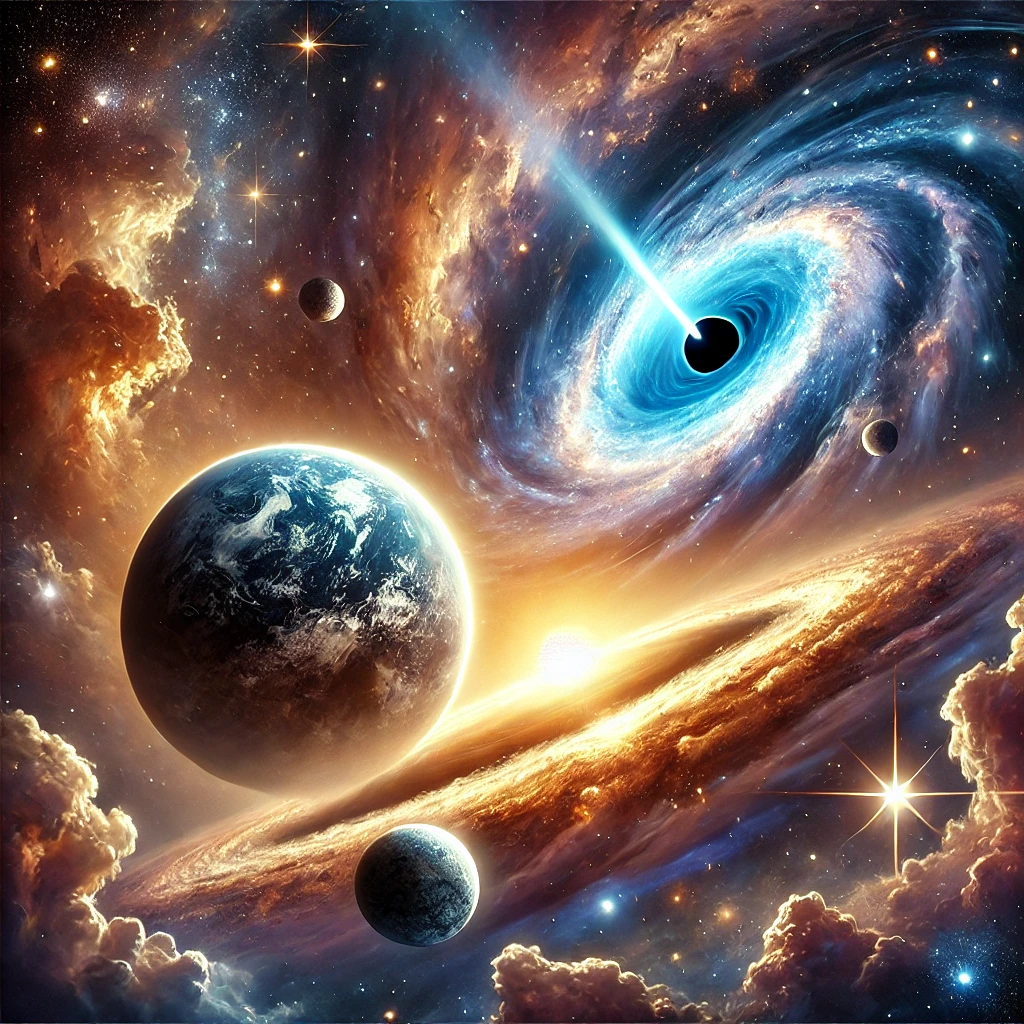A celestial body is any naturally occurring object located outside Earth’s atmosphere. These entities, ranging from stars and planets to moons, asteroids, and comets, are integral components of the universe, each playing a distinct role in the cosmic system.
Types of Celestial Bodies
- Stars
- Luminous spheres of plasma held together by gravity, stars are the primary sources of light and energy in the universe.
- Examples: The Sun (a main-sequence star), red giants, and white dwarfs.
- Planets
- Large, spherical bodies that orbit a star, such as Earth or Jupiter. Planets may have atmospheres, magnetic fields, and ecosystems.
- Divided into terrestrial (rocky) and gas giants.
- Moons
- Natural satellites that orbit planets, moons vary in size, composition, and geological activity.
- Example: Earth’s Moon, Europa (a moon of Jupiter).
- Asteroids
- Rocky or metallic objects, often irregularly shaped, that primarily reside in asteroid belts.
- Example: Ceres (the largest asteroid in the asteroid belt).
- Comets
- Icy bodies that release gas and dust when close to the Sun, creating bright tails visible from Earth.
- Example: Halley’s Comet.
- Dwarf Planets
- Celestial objects similar to planets but lacking certain criteria, such as clearing their orbital path.
- Example: Pluto, Eris.
- Black Holes
- Regions of space where gravity is so intense that nothing, not even light, can escape.
- Nebulae
- Vast clouds of gas and dust where stars form or remnants of supernova explosions.
- Example: Orion Nebula.
- Galaxies
- Massive systems of stars, stellar remnants, and interstellar matter bound by gravity.
- Example: The Milky Way, Andromeda Galaxy.
- Other Phenomena
- Includes quasars, pulsars, and exoplanets (planets outside the solar system).
Significance of Celestial Bodies
- Astronomical Exploration
Celestial bodies provide critical insights into the universe’s origin, structure, and evolution. - Cultural and Spiritual Impact
Throughout history, celestial bodies have inspired mythology, astrology, navigation, and scientific inquiry. - Life’s Origins
Planets and moons with specific conditions (e.g., water, atmosphere) are studied for signs of life.
Celestial Bodies in Spirituality
- Astrological Influence
In astrology, celestial bodies like the Sun, Moon, and planets are believed to influence human behavior and events. - Symbolism
Celestial bodies often symbolize guidance, eternity, and the mysteries of existence.
Key Concepts
- Orbital Mechanics: How celestial bodies move under the influence of gravity.
- Cosmic Relationships: Interactions between celestial bodies shape the structure of the universe.
- Observation Tools: Telescopes, satellites, and probes are used to study celestial objects.
Further Exploration
- How Stars Are Born and Die
- The Search for Exoplanets and Habitable Worlds
- The Role of Celestial Bodies in Mythology and Culture
Celestial bodies are the building blocks of the cosmos, each holding secrets about the universe’s past, present, and potential futures. Whether through scientific observation or spiritual exploration, they continue to inspire wonder and discovery.

